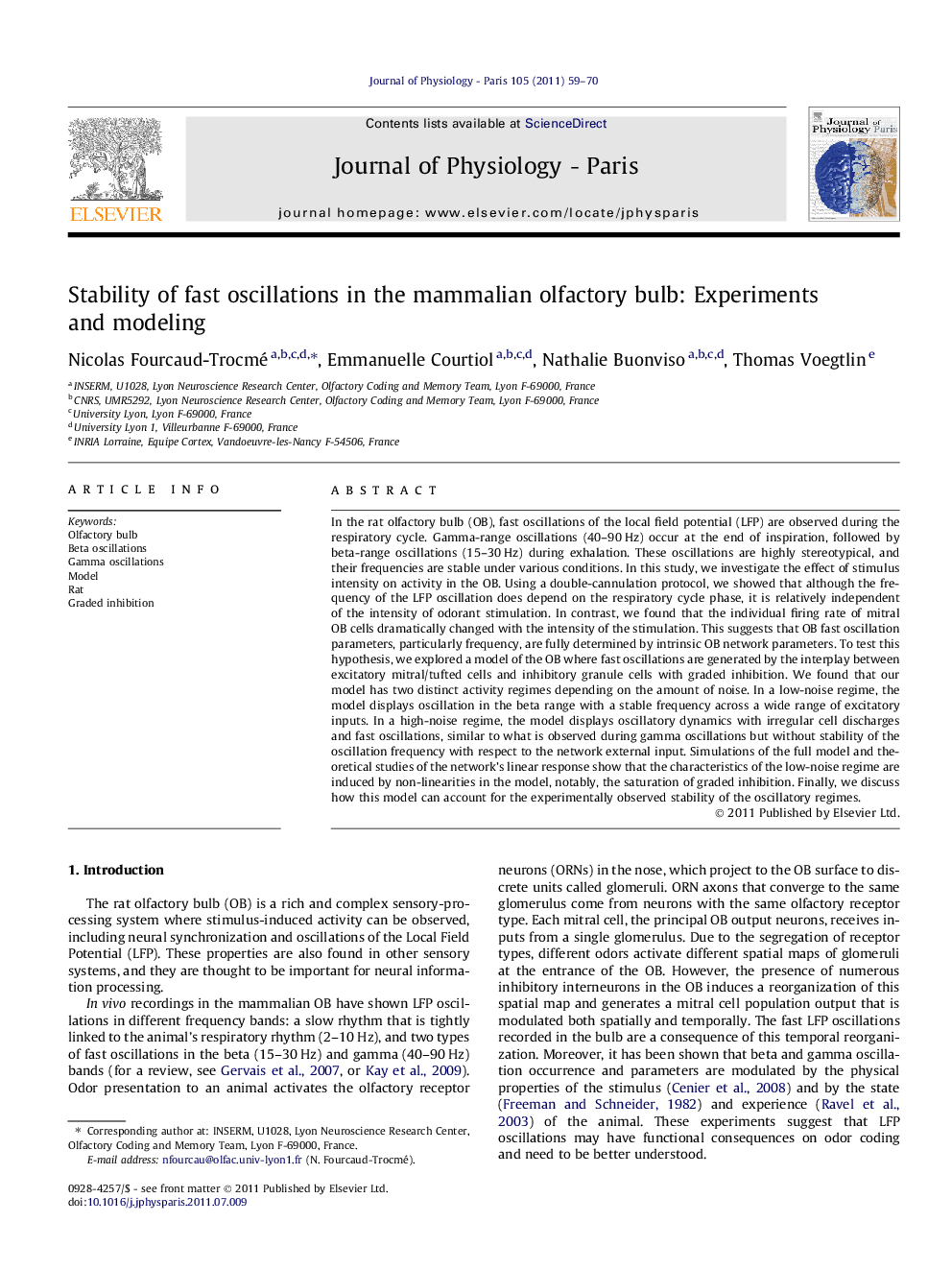| Article ID | Journal | Published Year | Pages | File Type |
|---|---|---|---|---|
| 2842227 | Journal of Physiology-Paris | 2011 | 12 Pages |
In the rat olfactory bulb (OB), fast oscillations of the local field potential (LFP) are observed during the respiratory cycle. Gamma-range oscillations (40–90 Hz) occur at the end of inspiration, followed by beta-range oscillations (15–30 Hz) during exhalation. These oscillations are highly stereotypical, and their frequencies are stable under various conditions. In this study, we investigate the effect of stimulus intensity on activity in the OB. Using a double-cannulation protocol, we showed that although the frequency of the LFP oscillation does depend on the respiratory cycle phase, it is relatively independent of the intensity of odorant stimulation. In contrast, we found that the individual firing rate of mitral OB cells dramatically changed with the intensity of the stimulation. This suggests that OB fast oscillation parameters, particularly frequency, are fully determined by intrinsic OB network parameters. To test this hypothesis, we explored a model of the OB where fast oscillations are generated by the interplay between excitatory mitral/tufted cells and inhibitory granule cells with graded inhibition. We found that our model has two distinct activity regimes depending on the amount of noise. In a low-noise regime, the model displays oscillation in the beta range with a stable frequency across a wide range of excitatory inputs. In a high-noise regime, the model displays oscillatory dynamics with irregular cell discharges and fast oscillations, similar to what is observed during gamma oscillations but without stability of the oscillation frequency with respect to the network external input. Simulations of the full model and theoretical studies of the network’s linear response show that the characteristics of the low-noise regime are induced by non-linearities in the model, notably, the saturation of graded inhibition. Finally, we discuss how this model can account for the experimentally observed stability of the oscillatory regimes.
► Olfactory bulb fast oscillation intrinsic dynamics do not depend on air flow strength. ► Mitral cell firing rate and odor response depend on air flow strength. ► Graded inhibition and low noise can account for stability of beta frequency. ► Model with high noise displays gamma frequency but without frequency stability.
